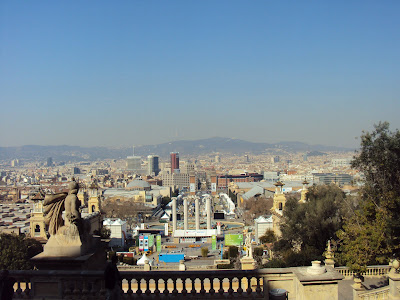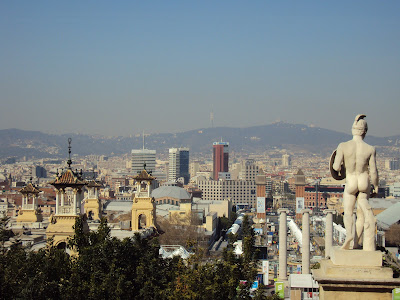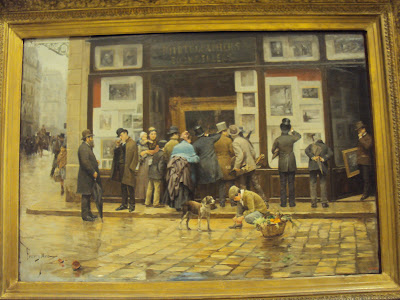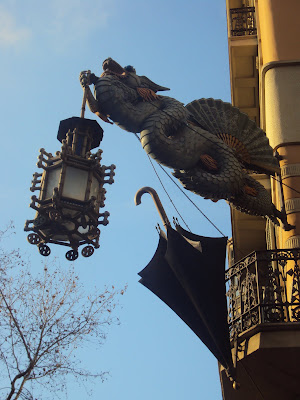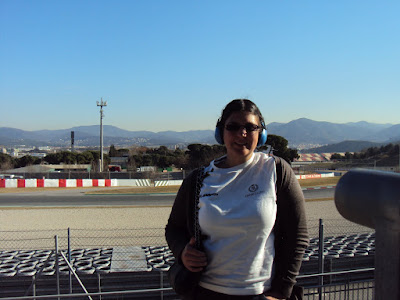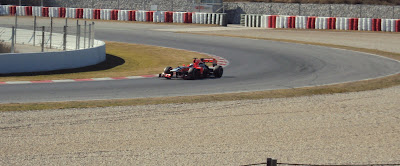Anyway, I decided that if I was ready to get on the RER out of the airport at 11, I would go to St Denis, otherwise not, since I didn't feel like more rushing about stressing in my day - going to St Denis would have meant taking the RER in to Gare du Nord, getting rid of my suitcase, taking another RER to near the basilica, walking, seeing the church, going back to Gare du Nord for my suitcase, and then on to Montparnasse for my train. A lot of fussing about, in other words. So when I was only ready for the RER by 11.30, it was an easy decision to take it all the way through to Denfert-Rochereau, leave my suitcase at the nearby Montparnasse, and then go to Plan B, visiting the Pantheon.
The other night, while drunk, I was talking about some of my Paris plans with a French friend, and she gave me what I thought was a map of Paris. I said I didn't need it, since I have at least one map lying about my apartment somewhere, but she insisted, and since it was to hand, I threw it in my suitcase when packing. Turns out it was a transport map, not a city map. I can read a map okay, but have zero sense of direction, so armed only with this map (which showed some main roads for the bus routes but no proper detail) and the information boards at Montparnasse (which only showed the immediate area), it took me quite a while to orient myself out of the station. Once I had finally figured out which way I was facing, it was actually really easy to walk to the Pantheon. (Sorry, I realise I have spent this entire post talking about transport logistics and timing, I'm finished now.)
I got to the Pantheon around 2, and was pleased to see that there was a free tour in French at 2.30. After taking a few pictures, I joined the tour, which definitely enhanced the experience of what is an interesting, but in my opinion, not spectacular site (even though the guy talked *really* fast, so I didn't get 100% of it). He started by pointing out the irony that this shrine to the Republican values of France (of which "laicite", or secularity, is a biggie) is located in a former church, a theme he would return to as he pointed out various clashing features of the decor. (PS the following is based on my probably imperfect understanding and memory, so sorry if I get any details wrong. I should probably put this on all my posts - someone from the Ukraine found my blog recently and pointed out everything I got wrong about the things I saw there, including I think some times when I was joking.)
He first explained that it was originally built when Louis XV (I think) was deathly ill with "love disease" - I guess syphilis or something - and he promised St Genevieve, the patron saint and protector of Paris, that he would build her a fancy church if he got better. Lo and behold, he did, and eventually followed through with his vow, commissioning the architect Soufflot, who was rather young and inexperienced, but who was working in a new style, the neo-classical, to make a new building that would be distinctly "Louis XV", set apart from the Rococo style of his predecessor Louis XIV. The neo-classical design combines the exterior appearance of a Greek temple with the floor plan of a medieval church. The inside is very spacious, capped with a dome that is twice the weight of the Eiffel Tower - quite the engineering marvel!
The Revolution happened not long after the church was actually finished, so the new republicans faced a bit of a dilemma. Knocking it down immediately seemed like a waste of the money that had just been wrung out of the population for its completion, but of course they were not on board with a big giant church. So they contented themselves with knocking the heads off the statues of saints and turning it into a Republican temple. The first person interred there was Mirabeau, whom I'm ashamed to say I don't know much about. I now know, though, that he was also the first person kicked out of the Pantheon, I think when Napoleon took over. I was also fascinated to learn that the walls, which are now covered with large paintings (not frescos - they are actually more like wallpaper, I learned) were originally made up of windows of the same size. Even more interesting was the fact that the Republicans bricked up the windows on the principle that light is a symbol of God (Jesus being the "light of the world") and so a Republican Temple should have as little light coming in to it as possible! I'm definitely no fan of religious extremism, but that seems a case of crazy anti-religious extremism to me.
The paintings on the wall weren't added until the 19th century, I think during a Republican period but under the presidency of someone who really wanted the monarchy back (but I forget exactly). Maybe under Louis-Napoleon Bonaparte, who was President of the Republic before becoming Napoleon III. This explains their pro-monarchist, religious nature (the Pantheon went back and forth over the past 200 or so years between Republican temple and Christian church). They depict the legend of St Genevieve, who saved Paris from starving under a siege by Atilla the Hun; Clovis, first King of the united Frankish tribes; Charlemagne, St. Louis and Joan of Arc. Joan of Arc was included as a solution to the problem that they had included a representative of all the royal families of France, but the Bourbons were still a bit problematic at this point. So instead of making the Bourbons the focus, they made Joan of Arc, who restored the Bourbon Dauphin to the throne (Charles X?) the centre of the story.
The Pantheon is also home to Foucault's pendulum, which was set up to prove that the earth revolved around the sun and not vice-versa. Of course, this had already been astronomically/mathematically demonstrated by people such as Gallileo and Copernicus, but this was a practical demonstration. I found this part a bit hard to follow, but the pendulum is set up over what looks like a sundial, and I think the idea is, since the pendulum only goes back and forth in a straight line, if it is moving over a different part of the sundial than it was x hours before, then it must have been the earth that moved and not the pendulum. Being a Bear of Little Brain, I kept thinking "but it's attached to the dome, and the dome is moving too, so shouldn't it be moving the same way as the sundial?", but I'm willing to take it on trust. The original was taken out of the Pantheon when it was turned back into a Christian church (the Church being historically a bit sniffy about these things, as I'm sure you know) and given to the Museum of Arts and Metiers. It was brought back to the Pantheon when that museum was under restoration, but the original is now back there, with the current version in the Pantheon only a copy.
The guide also explained the process of "Pantheonisation" or being admitted to the Pantheon, which is dedicated to (I forget the exact wording) "the great men of the nation". The first rule is you must be French, although that includes both "francais de souche" (native French - bit of a controversial term, I may add) and naturalised French such as Marie Curie. Then, your body or part thereof (including ashes) has to be available for burial in the Pantheon. In many cases, the rest of the body is elsewhere, but the heart is in the Pantheon. I can't remember the exact story, but I think when they wanted to put Louis Braille in the Pantheon, which only happened this century, his native town didn't want to let him go, so when they dug him up they cut off his hands and left them behind. This rule means that certain people, such as aviator and author Saint-Exupery, have a memorial plaque in the Pantheon, but are not officially "Pantheonised" because their bodies are not there. Other famous figures in the Pantheon include writers such as Victor Hugo, Alexandre Dumas and Emile Zola, philosophers Voltaire and Rousseau, politicians like Gambetta and Jaures, scientists like the Curies, army and resistance fighters. The guide pointed out the political nature of the Pantheon today, both in terms of French politicians visiting certain graves, and in the decisions made over who gets to be there. For example, after the divisive election between Jacques Chirac and the racist, nationalist Le Pen, Chirac had Alexandre Dumas, who I never knew was mixed race, but was the grandson of a Haitian slave and a French nobleman, reburied in the Pantheon. Time they had more women as well, I think, despite the dedication to "great men"! I think there are two women in there, one who was buried with her husband, and Marie Curie, also buried with her husband, but who is in there in her own right.
Anyway, that's all I remember learning about the Pantheon, but it was a very interesting visit! All in all, a successful trip, but I'm glad to be home!

Flying back over the Pyrennees

The Pantheon

Inside the Pantheon - those pesky Republicans didn't manage to block out all the light



The dome

The walls, former windows

The central statue to the Republican Convention Nationale, with the politicians, army and justice around a figure of Marianne, which stands where the altar would otherwise be, contrasts with the fresco of Jesus above

Foucault's pendulum

The guide relaunches the pendulum, pointing out, to the disappointment of all, that it's a pendulum, not a perpetual-motion machine

The statue of Voltaire in front of his tomb
